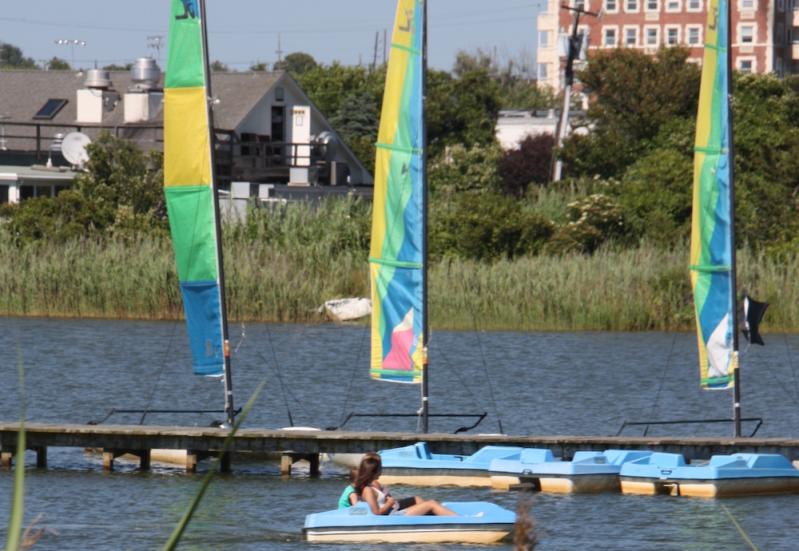Concerned Citizens of Montauk has warned people to avoid contact with the water in Fort Pond after samples taken at two sites on the pond earlier this week showed a certified harmful blue-green algal bloom.
Those who come in contact with the water are advised to rinse immediately with clean water and seek medical attention of they experience nausea, vomiting, or diarrhea; skin, eye, or throat irritation, or allergic reactions or breathing difficulties after contact.
C.C.O.M. monitors Fort Pond for blue-green algae, or cyanobacteria, in partnership with the Gobler Lab at Stony Brook Southampton, collecting samples each week that are then sent to the lab for testing. This week's tests showed a harmful bloom at an Industrial Road site and at the boat ramp on the southern side of the pond. A bloom detected last week at Big Reed Pond "has since either died or shifted," wrote Kate Rossi-Snook, an environmental Advocate with CCOM. The Suffolk County Health Department also reports cyanobacteria blooms in Mill Pond in Water Mill, Lake Agawam in Southampton, and Wainscott Pond.
C.C.O.M. also tests water bodies in Montauk, Amagansett, East Hampton, and Springs for the bacteria enterococcus, sharing the results on the Surfrider Foundation's Blue Water Task Force online portal. Entero levels are often elevated, posing a risk to human health, following "heavy rains, extreme high tides, or warm water temperatures," Ms. Rossi-Snook explained. This week, "samples were taken after the heavy and prolonged rainfall events earlier in the week. Many sites are well above the E.P.A.'s public health threshold of 104 colony forming units, including the ocean sites. Rainfall can deliver pollutants, such as bacteria and nitrogen, to surface waters through both stormwater runoff as well as through groundwater saturation."
Of the 31 sites tested earlier this week, 19 showed high entero levels -- one of them at 700 times the E.P.A.'s public health threshold. The highest bacteria levels -- 7,270 -- were recorded at the duck pond at the East Hampton Nature Trail on David's Lane, which connects to Hook Pond. Next highest were at Pussy's Pond in Springs (2,851) , the Dunemere Lane side of Hook Pond (2,700), and West Creek at Lake Montauk (2,603). In Montauk, high bacterial levels were also found at Little Reed Pond Creek, the nature preserve beach, East Creek, and South Beach on Lake Montauk, at Tuthill Pond, at the east side of the Ditch Plain jetty on the ocean, at the ocean beach by Surfside Place, and at the Surfside Place outfall pipe, also on the ocean, where the level was 1,904. Medium bacteria was recorded at the Fort Pond boat ramp.
In Amagansett, the highest level -- 1,725 -- was recorded at Fresh Pond Creek and high bacteria was also detected at Fresh Pond Beach.
In Springs, there were also high levels at the Shipyard Lane boat ramp on Accabonac Harbor and Folkstone Drive on Three Mile Harbor, and medium entero levels were found at Louse Point.
In East Hampton, in addition to the sites mentioned above, high bacteria was found at the Head of the Harbor on Three Mile Harbor, the Northwest Creek boat ramp, and the Northwest Creek culvert. Medium levels were detected at the Cove Hollow access to Georgica Pond. C.C.O.M. noted that sited in Georgica Pond are being process by the Surfrider Foundation at the Gobler Lab.
The group will continue its testing weekly, and notes that intensive monitoring is planned at the 15 of the high and medium sites.

